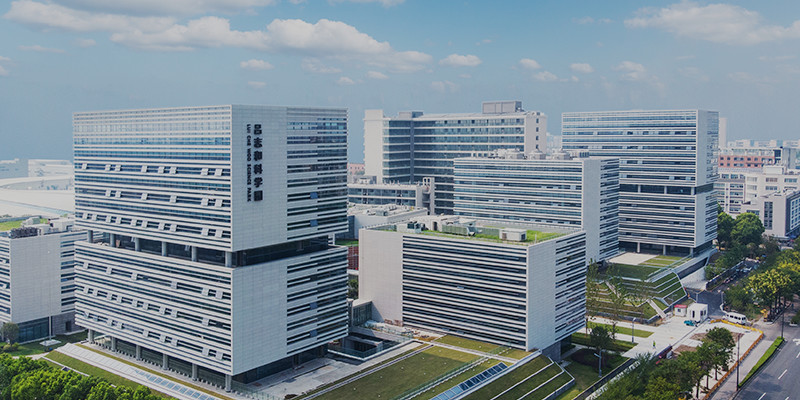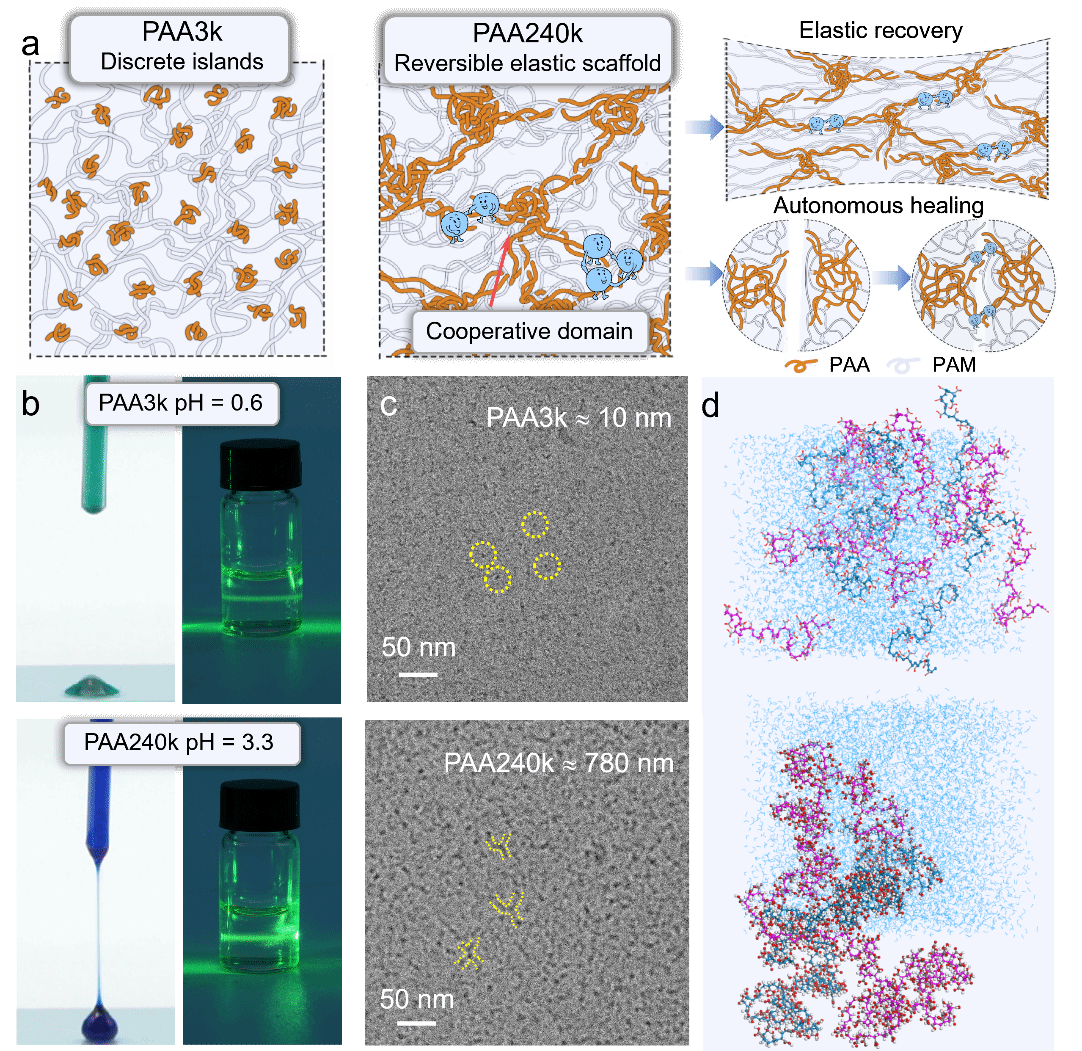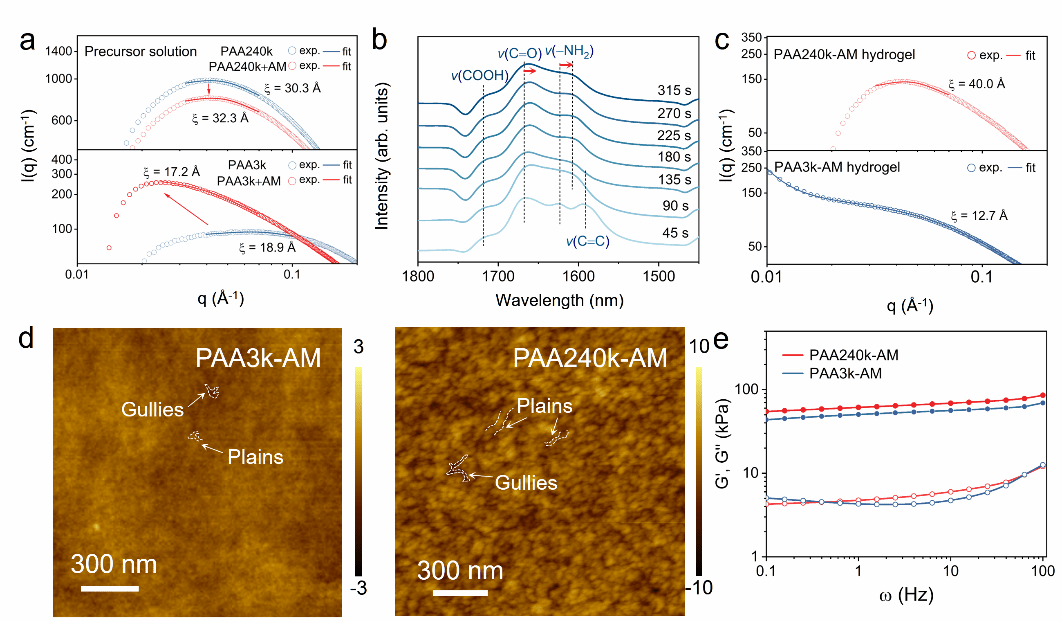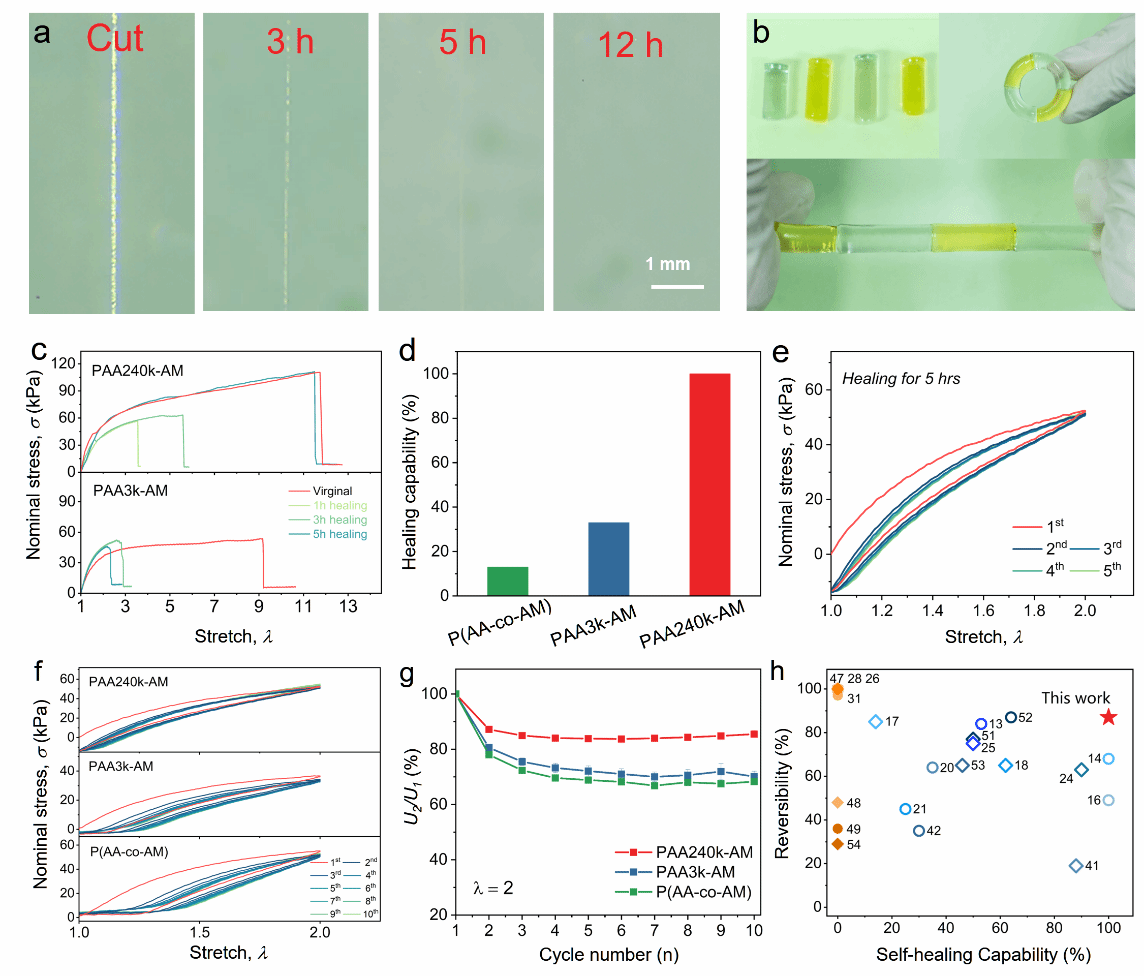搜索


Nature Communications recently published online the research paper “Observation of Topological Hydrogen-bonding Domains in Physical Hydrogel for Excellent Self-Healing and Elasticity” by the team led by Researcher Huang Fuqiang from the Future Materials Innovation Center at Shanghai Jiao Tong University's Zhangjiang Advanced Research Institute. The study reports a dual-network hydrogel (PAA240k-AM). This hydrogel leverages the topological structure of polyacrylic acid (PAA) colloids to assemble a dual-network hydrogel, locally constructing reversible elastic cooperative hydrogen-bonding domains within a non-cooperative hydrogen-bonding matrix. Only when interconnected cooperative domains formed by high-molecular-weight PAA assembly are present can the hydrogel achieve complete self-healing capability at room temperature and exhibit outstanding elasticity under continuous loading.
Hydrogels, as three-dimensional polymer networks rich in water content, have garnered significant attention in fields such as wearable devices, human-machine interaction, and robotics due to their biocompatibility and multifunctionality. In these applications, hydrogels with self-healing and high elasticity offer distinct advantages: the former enables repair of accidental mechanical damage, while the latter extends service life. Currently, the self-healing capability of hydrogels is typically achieved through directed self-assembly strategies that enable dynamic bond rearrangement. However, high-strength bonds require substantial energy input (light, heat, etc.) and extended time for self-assembly to reach thermodynamic equilibrium. Such reversible polymer networks are prone to fracture under sustained stretching and struggle to recover promptly, leading to significant residual strain and subsequent elasticity degradation. While dual-network hydrogels incorporate a secondary polymer network to maintain self-assembled structures, their self-healing capacity and elasticity remain notably inadequate.
To address this challenge, the team led by Fuqiang Huang at Shanghai Jiao Tong University, in collaboration with Wei Liu's group at ShanghaiTech University, utilized PAA self-assembled knotted colloids to construct dual-network hydrogels that balance self-healing capability and high elasticity under normal conditions. The hydrogel achieves ~100% self-healing efficiency within 5 hours at room temperature only when interconnected cooperative domains formed by high-molecular-weight PAA are present. It exhibits exceptional elasticity under continuous loading (<6.3% residual strain, >100% stress retention, >85% reversibility). Concurrently, the swollen physical hydrogel maintains 0% residual strain during cyclic loading. This topological design approach provides a crucial theoretical foundation for developing multifunctional hydrogel materials, offering broad practical application prospects.

Figure 1 (a) Schematic illustration of the structure, stretching, and self-healing process of topological hydrogels. (b) Photograph of a PAA droplet and Tyndall effect of PAA aqueous solution. (c) Cryo-EM images of PAA3k and PAA240k solutions. (d) Molecular dynamics simulations of low-molecular-weight PAA aqueous solution (repetition units, r.u. = 30) and high-molecular-weight PAA aqueous solution (r.u. = 256).

Figure 2 (a) SAXS patterns of precursor solutions for PAA240k, PAA240k+AM, PAA3k, and PAA3k+AM. (b) In situ ATD-FTIR spectrum of PAA240k-AM hydrogel synthesis. (c) SAXS pattern of PAA-AM hydrogel. (d) AFM images of PAA3k-AM and PAA240k-AM. (e) Shear rheograms of PAA240k-AM and PAA3k-AM hydrogels, and P(AA-co-AM).

Figure 3 (a-b) Healing process of PAA240k-AM. (c) Stress-strain curves of PAA240k-AM and PAA3k-AM after different healing times. (d) Healing capacity of PAA-AM hydrogels after 5 h. (e) Cyclic tensile curve of PAA240k-AM after 5 h of healing. (f) Continuous stress-strain curves of PAA240k-AM, PAA3k-AM, and P(AA-co-AM) after 10 cycles at l = 2. (g) Reversibility of PAA-AM hydrogel after 10 cycles. (h) Performance comparison between PAA240k-AM hydrogel and hydrogels reported in the literature.
Conclusions and Outlook:
The authors employed a long-chain polyacrylic acid colloid topological framework, demonstrating that molecular weight significantly influences the conformation of polyelectrolytes in multicomponent concentrated solutions and gels. This approach substantially enhances the self-healing properties and elastic mechanics of the resulting dual-network hydrogels. Additionally, this method enables the preparation of elastic physical hydrogels with high water content, providing a crucial theoretical foundation for developing multifunctional hydrogel materials.
The paper was published in Nature Communications. Corresponding author Professor Fuqiang Huang is from the School of Materials Science and Engineering at Shanghai Jiao Tong University and the Center for Future Materials Innovation at Zhangjiang Advanced Research Institute. Collaborating institutions include ShanghaiTech University, Shanghai Institute of Ceramics, Chinese Academy of Sciences, and Institute of Biochemistry and Cell Biology, Chinese Academy of Sciences. The work was supported by the Shanghai Municipal Science and Technology Commission and other funding sources.
Article link:
https://doi.org/10.1038/s41467-025-57692-y
Author: Huang Fuqiang Team
Contributing Unit: Center for Future Materials Innovation






 Address:No.1308 Keyuan Road, Pudong District, Shanghai
Address:No.1308 Keyuan Road, Pudong District, Shanghai Phone:86-21-54740000
Phone:86-21-54740000 E-mail:zias@sjtu.edu.cn
E-mail:zias@sjtu.edu.cn